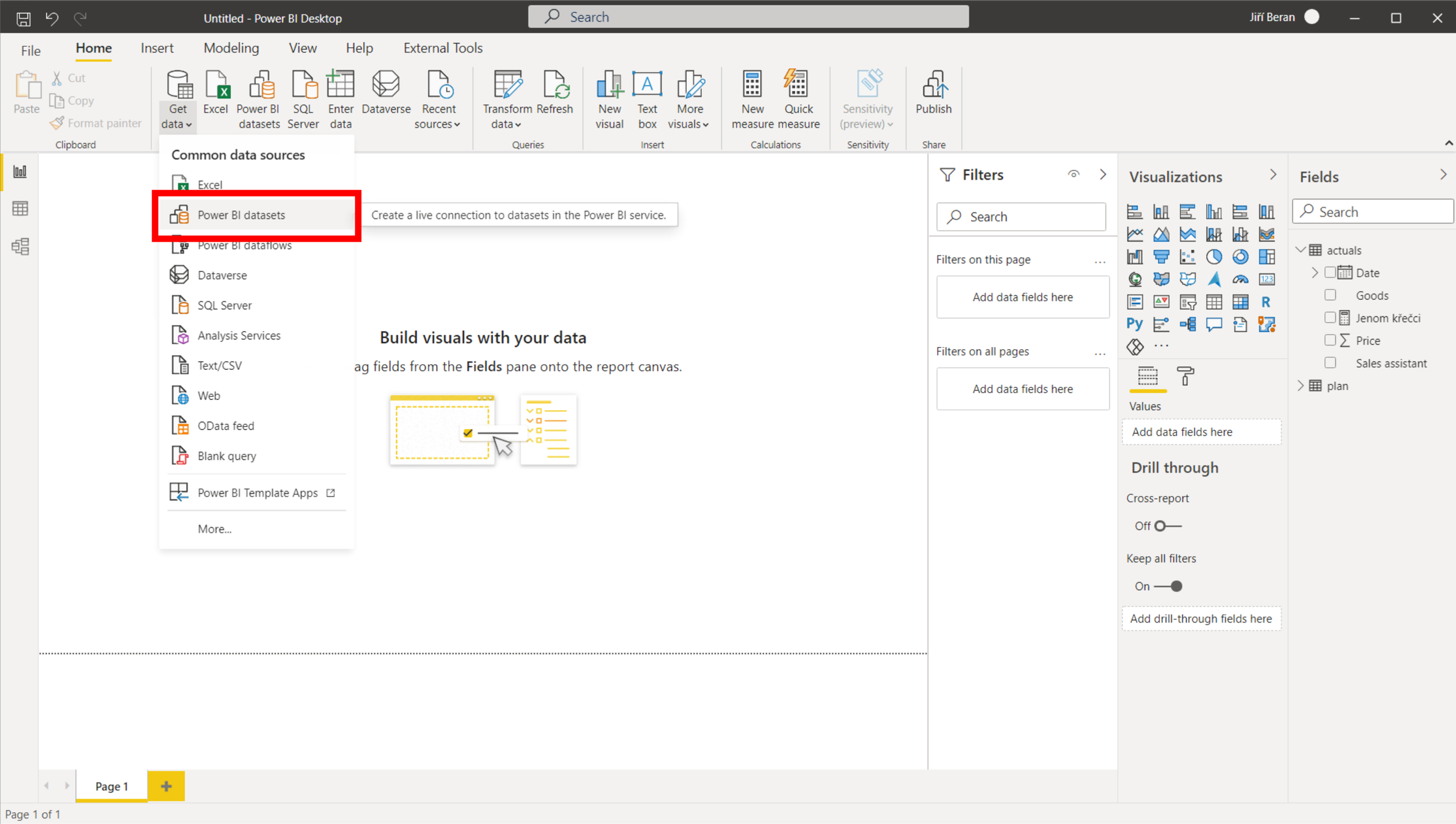Našimi kurzy prošlo více než 10 000+ účastníků
2 392 ověřených referencí účastníků našich kurzů. Přesvědčte se sami
If your using in Power BI in company should be effective, you don´t have to do one work twice. Sharing instead of duplication brings at least these benefits:
There are at least three nice ways how to share work in a company:
You can share complete reports. Someone else can look at the charts and, if needed, modify them.
This is a typical use case when “someone creates reports and someone else looks at them”.

You can also share Datasets. Which means to share the data model (tables, relations, measures…), when other users can use it and create their own reports from them.
Using of shared datasets is simple, you can just select it as a data source:

When using shared Dataset, you can:
You can´t:

In a Workspace it looks like this:

You can also share data source connections and data cleaning procedures (called Power Query in Power BI Desktop and Dataflow in cloud).
One user handles connections, refreshes, authorization etc, other people can use it to build their own data models.
Shared Dataflow can simply be used as a data source:
When working with a shared Dataflow, you can:
You can´t:
The result looks like this:
2 392 ověřených referencí účastníků našich kurzů. Přesvědčte se sami
![]()
![]()
Pište kdykoliv. Odpovíme do 24h
© exceltown.com / 2006 - 2023 Vyrobilo studio bARTvisions s.r.o.